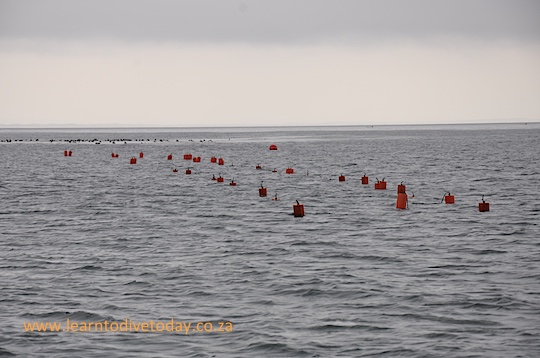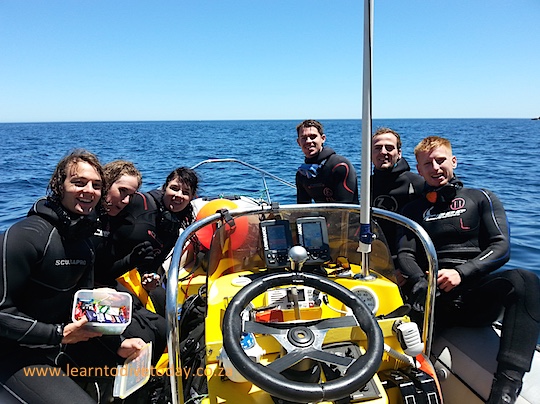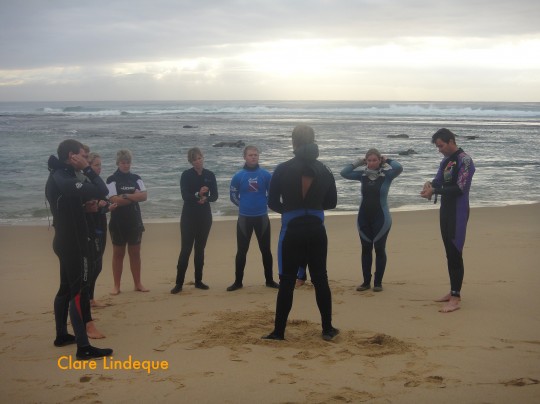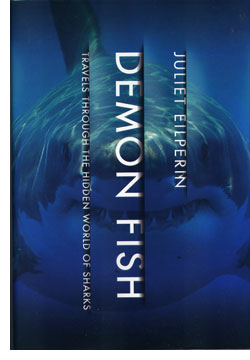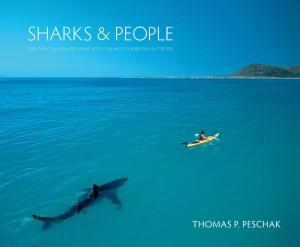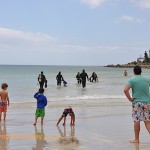One of the joys of having a manoeuvreable, user-friendly little boat is the opportunities that arise to participate in a variety of interesting events. Lately, we have been doing a number of open water swims; not swimming, but providing boat support to a swimmer who is traversing a stretch of open ocean. Last year we did the Swim for Hope around Cape Point, and the Freedom Swim from Robben Island to Big Bay, and several more of the same in 2015.
We used SharkShields at the Swim for Hope events, and with the increasing number of swims that Tony has been supporting we thought it might be time to invest in a SharkShield for use in these events. The SharkShield is a portable device designed to be worn by a surfer, free diver or scuba diver. It has a long antenna which emits an electric current which is intended to repel sharks. When used for open water swimming, the SharkShield is typically attached to the side of the boat with the antenna in the water alongside, creating a radius of 3-5 metres within which the current can be felt by a shark. If you touch the end of the antenna there is a noticeable pinching sensation, so swimmers have to be careful when approaching the boat.

Proper scientific testing of the device in Australia and South Africa indicates that it is by no means foolproof, and does not work in all situations, but it seems to have a certain usefulness if your visiting white shark is in the right frame of mind. The paper reporting the results of the SharkShield tests says:
Our study assessed the behavioural effects of the electric field produced by the Shark Shield Freedom7™. The study was performed in two locations and tested two distinct approach and behavioural situations to assess whether the response to the Shark Shield™ was consistent across behaviours. The electric field did not affect the proportion of static baits consumed, but significantly decreased the number of breaches, and surface interactions on a towed seal decoy.
The authors suggest that since breaching requires significant energy outlay, sharks may be more cautious to mount a breaching attack in the presence of anything out of the ordinary (I’m paraphrasing). Even with knowledge of the device’s usefulness only in certain situations, it still provides great peace of mind to swimmers while they swim in parts of the ocean where sharks are known to be mobile, such as False Bay.
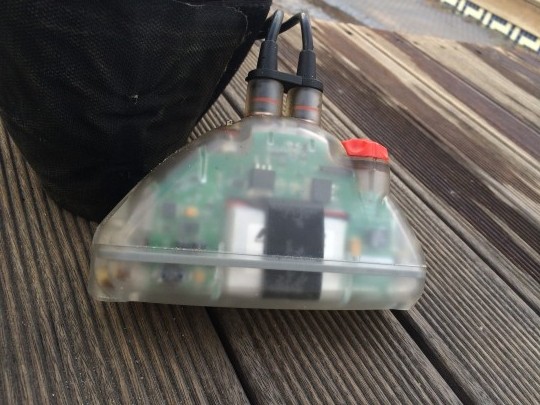
Tony was able to examine and test several lightly- to well-used Freedom7 SharkShields to see which of them worked, and what the battery life was like. In the process he shocked himself several times, which provided great entertainment to me and caused some consternation to the cats, who were themselves strolling around alarmingly close to the antennae. The unit itself is filled with something that looks like glycerin, to keep it pressurised and protect the electronics. The red switch at right turns the device on and off, and red and green lights indicate whether it’s on, charged, and functioning. A wet hand applied to the end of the antenna also gives information on whether the device is functioning…
The shark repellent cable that was tested at Glencairn this summer is a massively scaled up version of these retail SharkShields. It is essential that development and testing of non-lethal shark mitigation devices continues, to provide an alternative to measures such as the KwaZulu Natal shark nets, and the French government’s shark fishing activities at Reunion in response to multiple shark bite incidents at the island.








